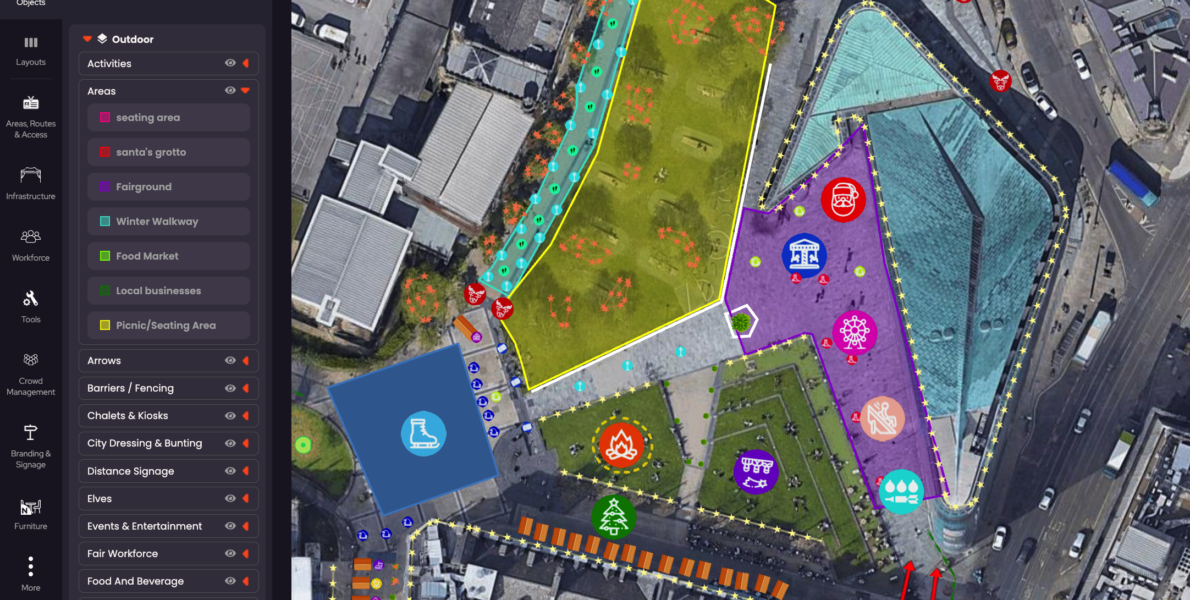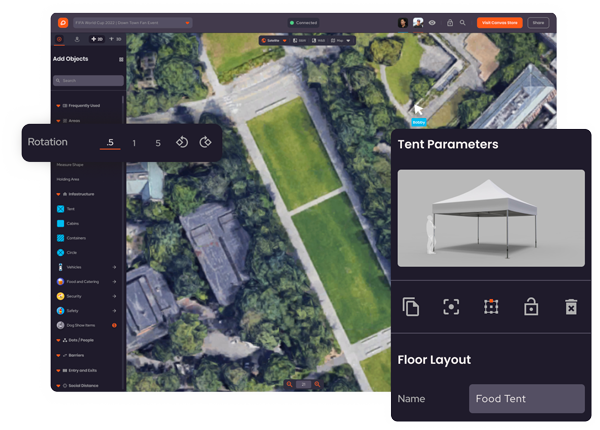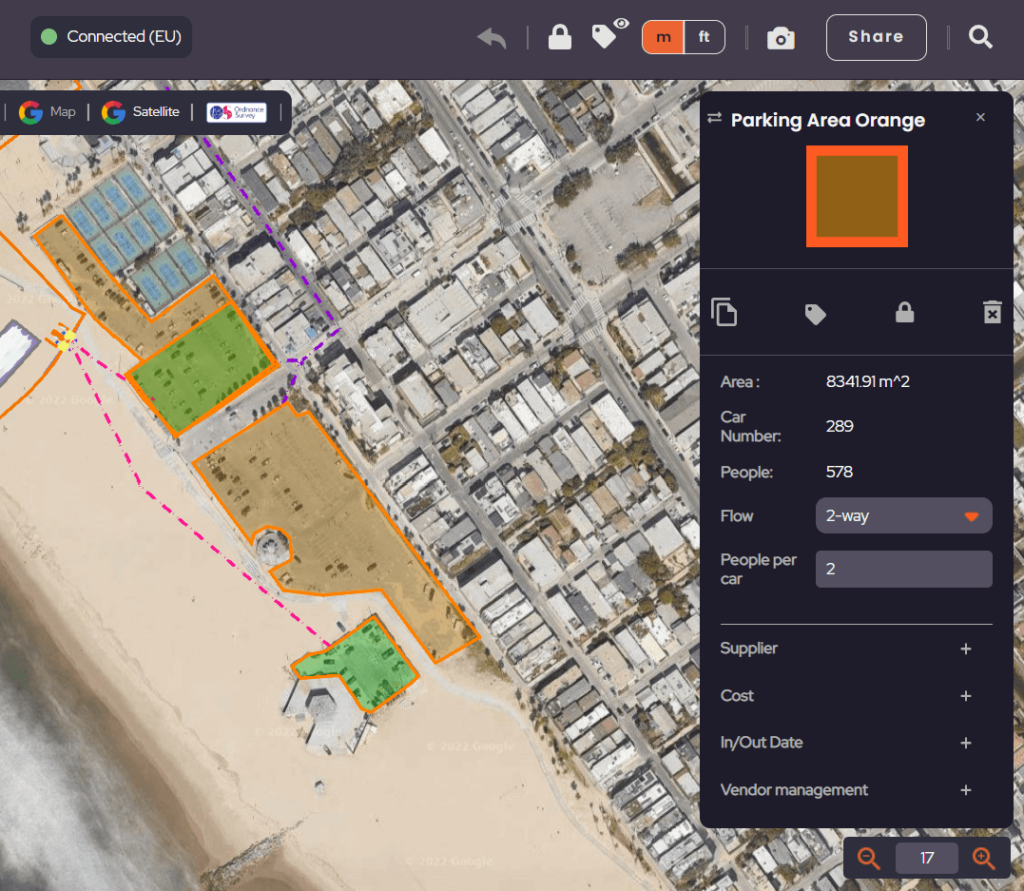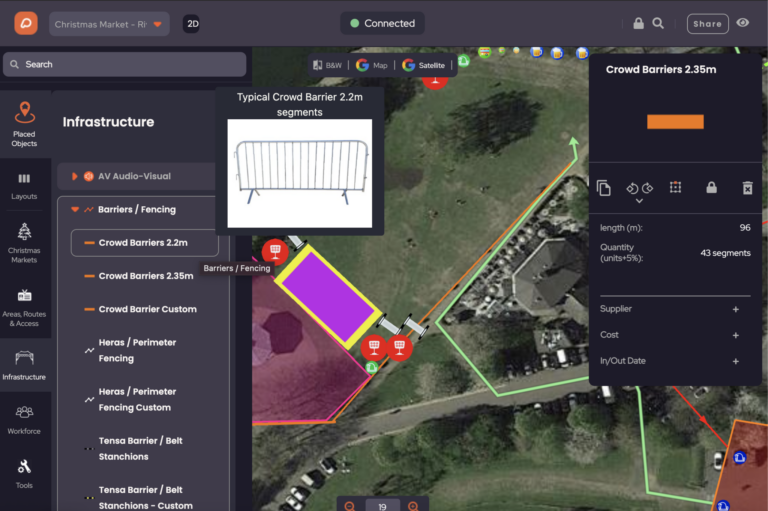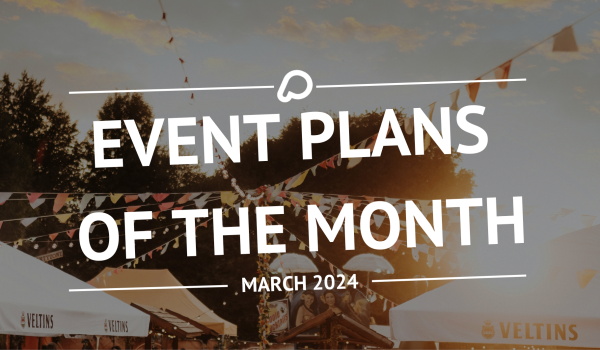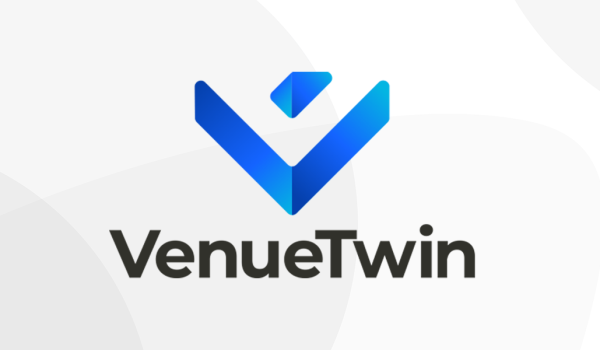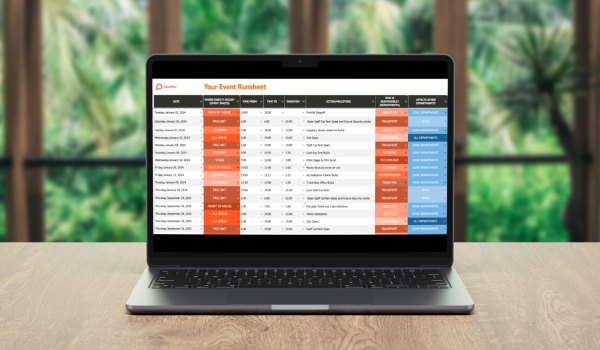Why you need an event site plan
Planning large-scale events is a painstakingly detailed job. It involves seemingly endless logistics – hiring staff, arranging rentals, coordinating with local authorities, booking talent, accounting for crowd and traffic management, aligning with stakeholders…the list goes on and on.
An essential element for any event planner is an event site plan. Site plans serve as a guide to your event, illustrating all elements of your event in one place. Some planners use tools like Powerpoint, Google Earth or CAD, but there are also more intuitive and highly-functional softwares on the market. Site plans can be 2D or 3D, and can be more or less detailed to present to different stakeholders. No matter what tools you use, a site plan is a non-negotiable element to any successful large-scale event.
A great event site plan will:
- be highly detailed and accurate,
- help with vendor management
- be easily altered
- allow for collaboration with all stakeholders
- save you time
- help clients and other stakeholders visualize your ideas
- provide tools specific to your event-type
To get started on your event site plan, it’s important to not only choose your event site but to visit! Getting a true “lay of the land” will help you visualize your event and identify potential challenges early.
Next, you need to decide how you are going to build your site map. Will you use photoshop and CAD or go with a software? There are a lot of benefits to using an event planning software to create your site plan.
When you’re ready to start building your plan, you’ll have lots to consider. Here are 9 elements to include in your event site plan.
How to build an event site plan
1. Temporary Structures (tents, stage, etc.)
Any large event – outdoor ones especially – will require temporary structures. Tents, stages, and other structures are an important part of bringing your event to life. But, if you don’t plan out where they will fit, they could end up throwing off your site plan in a major way.
Make sure to place your temporary structures on your event site plan as accurately as possible to avoid day-of catastrophes. In OnePlan, you can mockup custom tent sizes to ensure that your map is accurate down to the inch in both location and scale. You can also utilize OnePlan’s Object Array, a Snap-to-Grid tool which allows you to space out your structures on the map perfectly. You can input the number of tents needed as well as the distance between them and OnePlan will generate them on the event map. You can use it to map out tents, stages, and other structures.
2. Staff
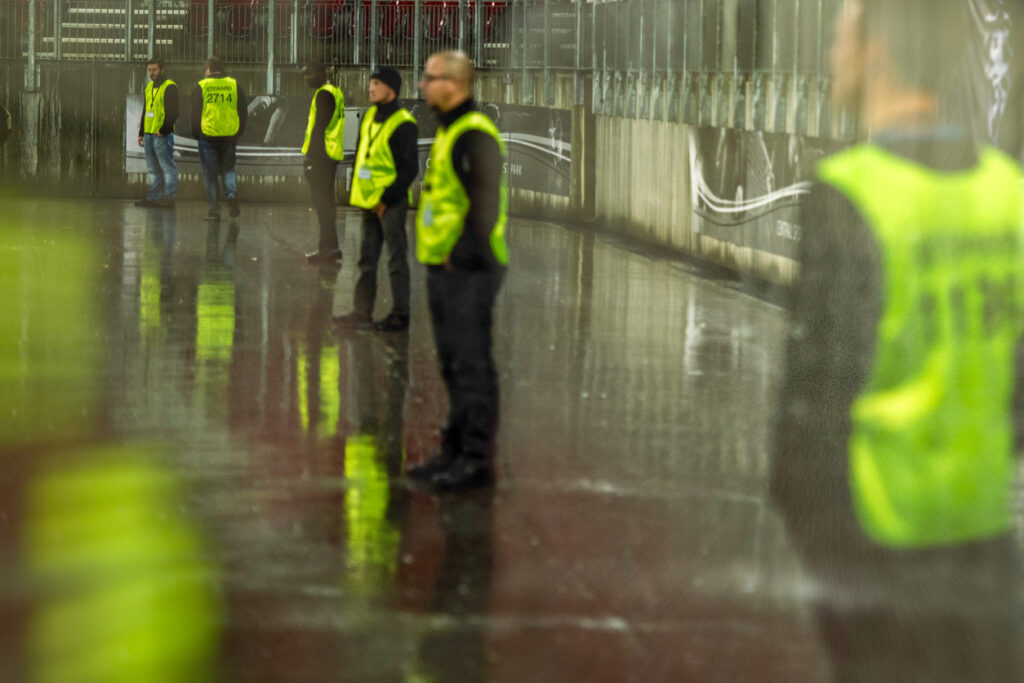
A good event site plan will account for staff. In OnePlan, place volunteers, stage-hands, security and more across your map. OnePlan’s dot planning functionality can also help you create a comprehensive plan to handle your staff. Each ‘dot’ can be allocated a code and notes added to their profile for their role, equipment, shift times and more. The report can be exported to create sign-in sheets and health and safety documents.
3. Bathrooms
Nothing ruins someone’s experience of a major event like having to wander far away to find a bathroom, meanwhile losing their friends and their place in the crowd. Then, when they finally find a bathroom, they’re faced with an extremely long line. When creating your event site plan, do not forget to plan for amply bathrooms!
4. Waste Management
Garbage is another less-than-glamorous element of your event that should not be overlooked. You need to create a waste management plan. No matter how wonderful most elements of your event are, no one will have a good time if they can’t find a garbage bin or if they see (and smell) large piles of trash overflowing from the garbage bin they do find. You can plot out where trash and recycling bins will go in OnePlan.
5. Parking
Proper traffic management might not be the key to a great event, but it can definitely be a major part of an event gone wrong. Make sure your site plan includes traffic management. In OnePlan, you can create a traffic management plan that plots the precise location of signage, stewards, temporary traffic signals, road closures, contraflows and diversion routes.
6. Crowd Control
Ideally, your event will draw a crowd, so it’s important your event site plan includes crowd management. Good crowd management ensures there’s sufficient space for crowds to move around, wait in line, or rest, and that the public’s experience and safety are supported by event staff. The result is a free-flowing, comfortable space, staffed by a knowledgeable and responsive workforce. Make sure your site plan accounts for crowd control and allows you to test out different layouts and space configurations.
7. Generator / Power Sources
Generators and power sources can take up a lot of space, so make sure you take them into account in your site plan.
8. First Aid Points
Generators and power sources can take up a lot of space, so make sure you take them into account in your site plan.
9. Entrances, Exists, and Emergency Exits
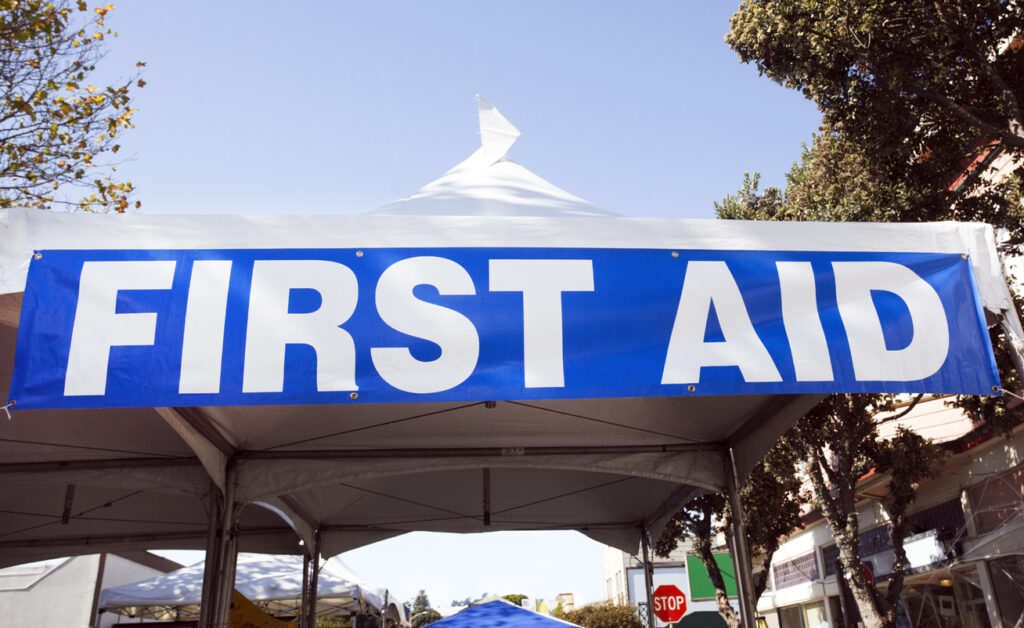
Use your site plan to map out entrances and exits as well as emergency exits. You can share your plan with staff so that they can properly guide guests and vendors in any situation.
"Very quickly, I saw the advantages of OnePlan over what we were using before. I was able to share an evolving document with my team and give a great picture to anyone working on or viewing the plan. It gave us a platform to discuss everything."

Gergely Markus
Sport Director, World Triathlon
Overall, your site map should make your job easier, not harder. Choose tools that make it intuitive and fun to create something detailed and accurate. OnePlan ticks all of the boxes so that you can focus on the details and make your event a success!
Sign up for free and start planning today.

